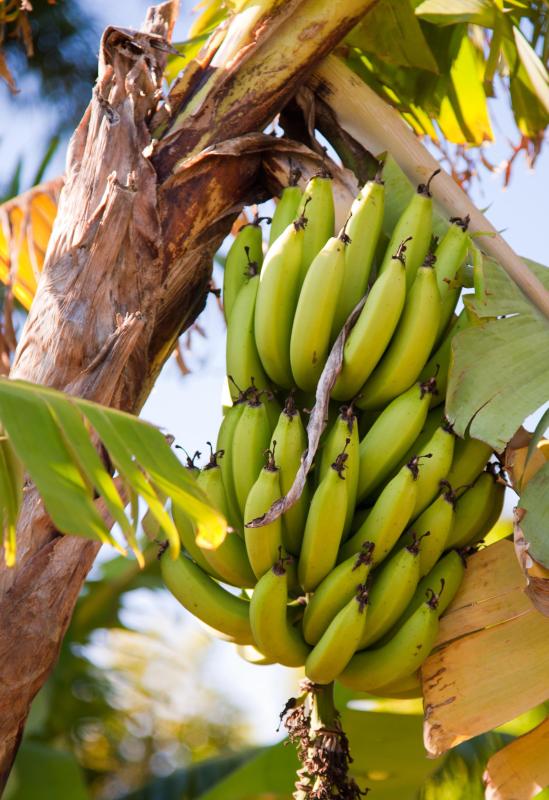At DelightedCooking, we're committed to delivering accurate, trustworthy information. Our expert-authored content is rigorously fact-checked and sourced from credible authorities. Discover how we uphold the highest standards in providing you with reliable knowledge.
What Are Maruya?
A light snack most often eaten by a snacker on the move who is looking for a sweet treat, maruya are banana pieces that have been battered, deep fried, and coated in sugar. They are also called plantain fritters or banana fritters. Maruya originates from the Philippines, where the dish is regarded either as a snack or a light meal. It is often served by street vendors and food sellers at outdoor events. Once they are cooked, the fried banana pieces are sweetened by rolling them in sugar.
Before they are battered for maruya, bananas are peeled and cut into shapes for frying. The shapes in which the banana fritters are cooked vary by preference, but cooks usually slice the fruit in the shape of sticks or lengthwise slices. Some novelty maruya pieces are carefully sliced into a fun shapes designed to resemble a hand when they are cooked.

Ingredients in the batter used to coat the fried bananas or plantains include dry ingredients such as flour, salt, and baking powder and wet ingredients such as water and eggs. Once they are coated, the battered bananas are deep fried in vegetable oil. To keep the maruya pieces from burning or becoming soggy, it is important to heat the oil before cooking and test to ensure that it is hot enough to brown the fritters, but not so hot that it burns the batter without cooking the banana.
Maruya are most often made from the common sweet bananas most people buy at the grocery store, but can also be made with plantains, which are a starchier cousin to the banana. In the Philippines, these plantains are called sabas. Like bananas, starchy plantains get sweeter when they ripen, and it is often these sweet ripe plantains that are used in maruya when sweet bananas are not. As with bananas, a green plantain is an unripe plantain, and an extremely ripe plantain has skin that is black in color. Another variation of maruya, called maruyang camote, uses sweet potatoes instead of bananas in the fritters.
In addition to its status as a common fast food snack, this sweet dish is also served as part of traditional Christmas fare in Filipino culture. The Philippines are a cluster of islands in the western Pacific Ocean that collectively make up the country in Southeast Asia known as The Republic of the Philippines. This country's cuisine has heavy influences from a wide variety of cultures, including Chinese, Spanish, and American food. Aside from plantains, other regional ingredients commonly consumed in the Philippines include citrus fruits and tropical fruits like coconuts and mangos, cured meat, and a wide selection of seafood.
AS FEATURED ON:
AS FEATURED ON:











Discuss this Article
Post your comments